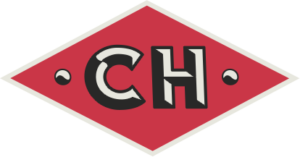Myths, Presenteeism, and the Return to Work

Setting the “proper” conditions for creativity, innovation, and collaboration is a topic surrounded by myths, legacy ideas, and what we think we know. These myths often suck the oxygen out of our discussions. They’re also one of the reasons why the conversation around “the return to work” and an organization’s physical space requirements is such a hotly contested subject.
I was pondering all of the above the other day while cruising through Twitter. Fast – because that’s the only safe, sane way to consume information on that platform. During my breakneck digital run, I stumbled upon a tweet thread that went something like this:
Where in the US is all the Bohemian $*** going on?
No. The answer is not Silicon Valley… it’s more of an indictment on the death of spirit as such and in its place, metrics, numbers, and standardization.
The shortening of Cartesian distances in exchange for the loss of nearness.
This little exchange is a reminder that we’re still clinging to several myths about creativity, innovation, and collaboration.
And those myths are holding us back.
Digging Deeper: It’s a Matter of Mindset
Underneath that Twitter discussion dwell the kernels of two separate yet interrelated myths.
-
- Myth 1 – Innovation can only arise from a free-spirited community.
- Myth 2 – Technological innovation is unique and “special” to Silicon Valley.
Both of these myths are grounded in the idea of geography and physical proximity (i.e., People must be close together for ideas to arise and innovation to occur.). While this may have once held true, new technologies have significantly loosened—if not lifted entirely—the previous restrictions we faced regarding knowledge, information, tools, and capital.
Yet it’s the hangover from the origins of these myths that we must squarely confront when we discuss creativity, innovation, collaboration, and the return to work.
Think of this hangover mindset as “presenteeism.”
There are many jobs that require a physical presence—in those circumstances, presenteeism is valid.
-
- A widget cannot be manufactured from home.
- A new electrical service line cannot be installed remotely. (At least not yet.)
- A donut cannot be sold at the counter by a smiling employee if that individual is in their basement.
Additionally, certain types of knowledge work are more effective when conducted in person. For example, brainstorming sessions can be carried out remotely. However, there are advantages to face-to-face interactions that are difficult to duplicate.
Finally, humans are social creatures, and we’re genetically predisposed to seek out social connections. This is a valuable trait, but that hardwiring unconsciously informs a great many of our choices—including how we think about where and how we work.
Conversely, many jobs do not require people’s physical presence on-site.
So why do we still cling to the fable of presenteeism? It’s because the myth of presenteeism is shaped by our recent history. Furthermore, the rapid rise of technologies and new types of work that do not require a physical presence have confounded many decision-makers.
I specifically chose the origin of the myths underlying presenteeism to highlight this important issue. I also encourage you to pause to think about the other myths in our personal and professional lives that we thoughtlessly accept. I challenge you to refrain from automatically accepting “conventional wisdom” or the “status quo” simply because they’ve been around for a while.
Destiny: It’s Yours to Create
Many years ago, an alumnus from my college, Dr. Hugh Herr, suffered a severe mountain climbing accident while he was an undergraduate.
“When I came out of the hospital, the entire world said I was weak, and my life was over…They said, ‘You can’t do it, and you’ll never be able to do it.’… I was told by my doctors and therapists, ‘This is as good as it gets. Don’t complain.’”
Hugh said “No” to that conventional wisdom and has spent his life pushing the boundaries of biomechanics, bionic limbs, and the intersection of humanity and technology. He’s created breakthrough advances in biomechatronics and continues to push beyond what we think of as “possible.” His achievements have happened all because he did not accept the underlying premise of the myths predicting his capabilities.
While you may not be changing the world quite as substantially as Hugh, you do have the ability to confront myths and the underlying presumptions that are holding you back from what’s attainable.
Don’t ever be afraid to unpack a myth, and under no circumstances accept conventional wisdom at face value – even if it comes from me. ☺️
Having trouble dissecting a myth and figuring out how to achieve the outcomes you desire? Drop me a line, and we’ll unpack it together.
